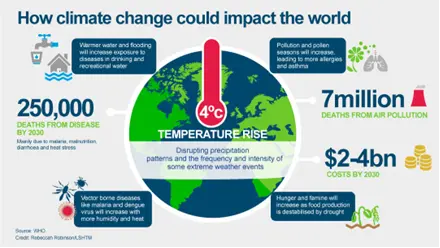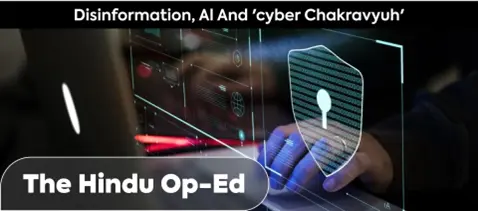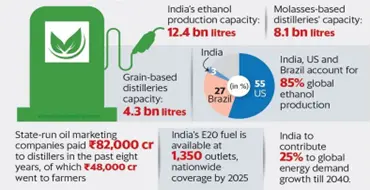Monday, 19th August 2024
India – Malaysia Bilateral Relationship
Why in the news?
- Malaysian Prime Minister Dato Seri Anwar bin Ibrahim is scheduled to visit India from August 19-21, marking his first visit as Malaysia's Prime Minister.
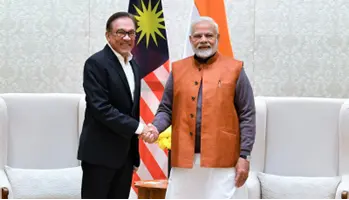
India – Malaysia Bilateral Relationship:
- Diplomatic relations between India and the Federation of Malaya (predecessor state of Malaysia) were established in 1957.
- The two countries enjoyed a robust relationship in the 1960s, facilitated by the personal friendship between Prime Ministers Nehru and Tunku Abdul Rahman Putra.
- Currently, India and Malaysia maintain close political, economic, and socio-cultural relations.
- Malaysia hosts a large Indian diaspora, numbering over 2.95 million, making it the second largest PIO community globally after the US.
Economic & Commercial Relations:
- Malaysia is the 13th largest trading partner for India, while India ranks among the top ten trading partners for Malaysia.
- A Comprehensive Economic Cooperation Agreement (CECA), effective from 2011, covers goods, services, and investment.

Major Exports:
- Mineral fuels, mineral oils, aluminium and its articles, meat and edible meat offal, iron and steel, copper and its articles.
Major Imports:
- Palm oil, mineral fuels, mineral oils, electrical machinery and equipment, animal or vegetable fats and oils.
Investments:
- As per official figures from DPIIT, Malaysia is the 26th largest investor in India, with an FDI inflow of USD 1.16 billion from April 2000 to September 2022.
- Malaysian construction companies have their largest presence outside Malaysia in India.
- Indian companies have invested in approximately 250 manufacturing projects totaling over USD 2.62 billion.
- Over 150 Indian companies operate in Malaysia, including 61 joint ventures and 3 Public Sector Undertakings.
- Trade between India and Malaysia can now be settled in Indian Rupees (INR) in addition to other currencies.
Defence and Security:
- Defence relations between India and Malaysia have grown steadily since the signing of a Memorandum of Understanding (MOU) on Defense Cooperation in 1993.
- Both countries participate in each other’s biennial defence exhibitions, LIMA and MILAN.
- India is involved in the Cooperative Mechanism on the Straits of Malacca and Singapore (SOMS), contributing to projects that enhance navigational safety and environmental protection.
Challenges and Prospects in India-Malaysia Economic Ties:
- Challenges such as geopolitical tensions, global demand stagnation, and higher import tariffs could impact the business relationship between India and Malaysia.
- Despite these challenges, strong trade ties are expected to continue.
- Both nations, being members of key global forums like the Commonwealth of Nations, NAM, G-15, and G-77, support each other’s cooperation.
- Opportunities to further strengthen bilateral relations exist, including avoiding double taxation, mutual customs assistance, improving air connectivity, and enhancing airline collaborations.
- Promising factors include a vibrant diaspora, steady GDP growth, a younger population compared to China, expected increases in FDI, and rapid digitization.
- The revival of the India-Malaysia Joint Commission Meeting after 12 years signifies renewed commitment to cooperation.
- The forthcoming amendment to the Malaysia-India Comprehensive Economic Partnership Agreement (MICECA) aims to include new economic sectors and achieve a trade volume of USD 25 billion within the next three years.
- By exploring new sectors, diversifying trade, and fostering beneficial collaborations, both countries can support India’s goal of becoming the world’s third-largest economy by 2027 and strengthen ties with ASEAN.
Source: ETV
Need for a Central Protection Act for Doctors
Why in the news?
- Resident doctors across India have gone on strike following the tragic incident of rape and murder of a young doctor at R.G. Kar Medical College in Kolkata on August 9, 2024.
- This event has highlighted the urgent need for a Central Protection Act to ensure the safety of healthcare professionals.
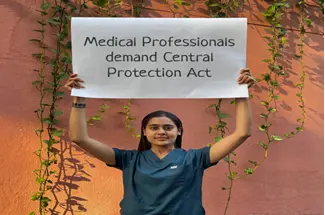
Current Status:
- Legal Provisions:
- Health and law and order are State subjects under the Constitution of India, placing the responsibility for addressing and preventing violence against healthcare workers primarily on State governments and Union Territory administrations.
- Currently, centralised data on fatalities of medical professionals due to violence is not maintained.
- Historically, violence against healthcare workers has been an issue in India, exemplified by the case of Aruna Shanbaug, who remained in a vegetative state for 41 years following a 1973 assault.
- Need for Safe Work Environment:
- Medical institutions often have inadequate infrastructure, such as poor lighting and insufficient security, affecting the safety of healthcare workers.
- Recommendations include improving lighting, increasing security personnel, and installing surveillance systems to ensure a safer working environment.
Situation Around the World
- Global Measures:
- United Kingdom: Enforces a zero-tolerance policy towards violence against healthcare workers, supported by dedicated security teams and comprehensive reporting systems.
- United States: Some states classify assaults on healthcare workers as felonies, serving as a strong deterrent.
- Australia: Hospitals have implemented safety measures such as security personnel, panic buttons, and mandatory de-escalation training.
- Implications for India:
- India should consider introducing a Central Protection Act and adopt global best practices to enhance the safety and protection of its healthcare professionals.
Demands of Doctors:
- Indian Medical Association (IMA):
- Recognition and Addressing Violence: The IMA has called for the Union government to acknowledge and address violence against doctors.
- Security Protocols: Demands include implementing security measures similar to those at airports, designating healthcare centers as safe zones, and ensuring mandatory security measures like CCTV and security personnel.
- Working Conditions: The IMA highlights the poor working conditions, noting that the victim was on a 36-hour shift with inadequate rest facilities.
- Investigation and Compensation: Calls for a thorough investigation into the incident, justice for the victim, accountability for vandalism, and compensation for the victim's family.
Steps Taken by the Centre
- Recent Measures:
- Ministry of Health and Family Welfare: Issued an order requiring heads of institutions to file an FIR within six hours in the event of violence against healthcare workers.
- National Medical Commission (NMC): Directed medical colleges to develop policies for a safe work environment, mandating prompt investigation of violence against medical students and submission of detailed reports within 48 hours.
Conclusion
The recent violence against doctors, highlighted by the tragic incident at R.G. Kar Medical College, underscores the urgent need for a Central Protection Act. Implementing such legislation, alongside improving security and working conditions, will safeguard healthcare professionals and align India with global best practices for their protection.
Source: TH
Global South Summit 2024
Why in the news?
- The 3rd Voice of the Global South Summit (VOGSS) was hosted by India in virtual format.
- It was held with the overarching theme of "An Empowered Global South for a Sustainable Future”.
- India had hosted the 1st VOGSS on 12-13 January 2023, and the 2nd Voice of Global South Summit on 17 November 2023, both in virtual format.
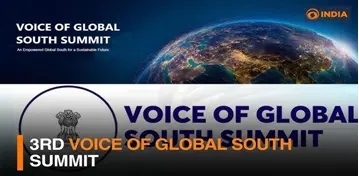
Constituents of the Global South:
- Not a Geographical Line:
- The Global South is not strictly a geographical term.
- Countries in the Global South may be in the northern hemisphere, e.g., India and China.
- Conversely, countries in the southern hemisphere like Australia and New Zealand are not included.
- Brandt Line as a Border:
- The Brandt Line, proposed by Willy Brandt in the 1980s, visually represents the north-south divide based on per-capita GDP.
- It spans from northern Mexico, across Africa and the Middle East, looping around India and China, down to East Asia, excluding Japan, Australia, and New Zealand.
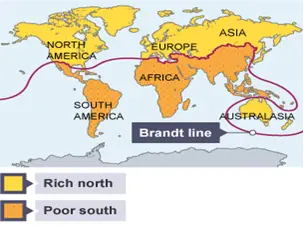
- Global South as a Concept:
- The Global South represents a combination of geographical, geopolitical, historical, and developmental aspects, though not uniformly defined.
India Emerged as the Voice of the Global South:
- G20 Presidency Vision: India's G20 presidency, beginning December 1, 2022, prioritised the Global South, organising eight thematic ministerial segments to address their key concerns.
- Raising Global South Issues: India has consistently highlighted Global South issues in international forums and UN conferences.
- COVID-19 Response: India distributed vaccines to approximately 100 countries and provided medicines to around 150 nations, reinforcing its role as the "Pharmacy of the World."
- Voice of Global South Summit: India regularly hosts this summit and ensured Global South prominence at the G7 Summit in Hiroshima.
- African Union's G20 Membership: Under India's presidency, the African Union was granted full G20 membership.
- BRICS Summit Remarks: At the 15th BRICS Summit, PM Modi emphasised the Global South's shared history of resistance against colonialism and apartheid.
- International Taxation Event: India hosted a two-day event on international taxation to bolster capacity building from a Global South perspective.
- India-UN Capacity Building Initiative: Announced in September 2023, this initiative aims to share India’s best practices with Global South countries.
- DAKSHIN Inauguration: PM Modi inaugurated DAKSHIN, a global center of excellence for the Global South, during the second summit.
- Satellite Proposal: India proposed launching a satellite for weather and climate monitoring for the Global South at the G20 Summit.
3rd Voice of the Global South Summit (VOGSS):
- Event Format:
- The 3rd VOGSS was held in a virtual format.
- The summit was organised into two main sessions: Leaders' Session and Ministerial Sessions.
- Inaugural Session:
- Hosted by Prime Minister Narendra Modi at the Head of State/Government level.
- The overarching theme of the session was "An Empowered Global South for a Sustainable Future."
Key Highlights from PM Modi's Speech:
- Global Development Compact: Proposed a human-centric Compact to avoid debt burdens, focusing on trade, capacity building, technology sharing, and concessional finance. India will initiate a $2.5 million trade promotion fund.
- Global Challenges: Addressed uncertainties from COVID-19, war, climate change, and emerging technology issues, stressing inclusive global governance.
- Institutional Failures: Criticised outdated global governance and financial institutions, urging the Global South to unite and learn from each other.
- Digital Public Infrastructure (DPI): Highlighted the Global DPI Repository, supported by agreements to share the 'India Stack' with 12 Global South partners, and established a $25 million Social Impact Fund to advance DPI.
|
UPSC Civil Services Examination, Previous Year Questions (PYQs) Prelims Q:1 In which one of the following groups are all the four countries members of G20? (2020)
Ans: (a)
Mains Q:1 ‘The long-sustained image of India as a leader of the oppressed and marginalised nations has disappeared on account of its newfound role in the emerging global order.’ Elaborate. (2019) |
Source: HT
Governor Sanctioning the Prosecution of the Chief Minister
Why in the news?
- Recently, The Karnataka Governor has granted sanction for the prosecution of the Chief Minister in connection with alleged corruption related to land allotment to his wife by the Mysuru Urban Development Authority (MUDA).
What is the MUDA ‘Scam’?
- The case concerns allegations of corruption related to the allotment of land by MUDA to the Chief Minister's wife.
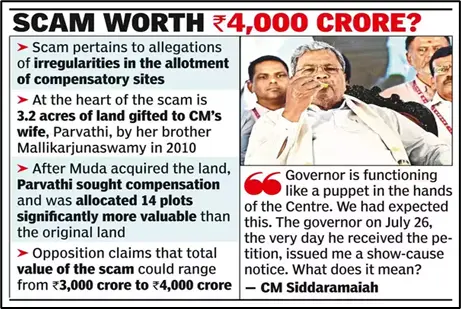
Powers of Sanctioning the Prosecution of the CM:
- Legal Provisions: The sanction for prosecution is granted under the Prevention of Corruption Act, 1988, and the Bharatiya Nagarika Suraksha Samhitha, 2023, following petitions from social activists.
- SC Ruling on Governor’s Discretion: The Governor referenced a 2004 Supreme Court ruling that emphasised the necessity for Governors to exercise discretion based on factual evidence to avoid a breakdown of rule of law.
Intention Behind Governor’s Decision and its Criticism:
- Intention: The Governor believes that the allegations and supporting evidence warrant a fair and impartial investigation.
- Criticism: The State government accuses the Governor of acting under central government influence, condemning the decision as illegal, unconstitutional, and contrary to democratic and federal principles.
Other Instances When Governors Moved Against CMs:
- Governor’s Discretion: The issue of whether a Governor can independently sanction the prosecution of a Chief Minister, without the Council of Ministers' advice, has been addressed in limited cases.
- Case of Maharashtra: In 1982, a Supreme Court judgement upheld the Governor’s discretion to sanction the prosecution of former Maharashtra Chief Minister A.R. Antulay.
- Case of Tamil Nadu: In 1995, Tamil Nadu Governor Marri Channa Reddy issued a sanction for prosecuting then-Chief Minister Jayalalithaa. The Madras High Court upheld the sanction, citing the Governor’s immunity under Article 361.
|
UPSC Civil Services Examination, Previous Year Question Prelims Q:1 Which of the following are the discretionary powers given to the Governor of a State? (2014)
Select the correct answer using the code given below:
Ans: (b)
Mains:
Q:1 Whether the Supreme Court Judgment (July 2018) can settle the political tussle between the Lt. Governor and elected government of Delhi? Examine. (2018) Q:2 Discuss the essential conditions for exercise of the legislative powers by the Governor. Discuss the legality of re-promulgation of ordinances by the Governor without placing them before the Legislature. (2022) |
Source: TH
Lateral Entry in Central Government
Why in the news?
- The Union Public Service Commission (UPSC) has issued a call for applications for lateral entry positions from professionals in the private sector, state/UT governments, and public sector undertakings (PSUs).
- This recruitment drive aims to fill 45 posts of Joint Secretary, Director, and Deputy Secretary across 24 Central ministries.
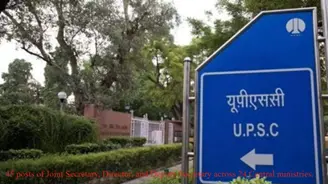
About Lateral Entry in Civil Services:
- Concept:
- Lateral entry involves appointing specialists from the private sector into government roles.
- It was endorsed by the NITI Aayog in its Three-Year Action Agenda and recommended by the Group of Secretaries (GoS) on Governance for middle and senior management levels in government.
- Objective: Lateral entry seeks to:
- Introduce domain expertise into civil services.
- Address the shortage of IAS officers at the Centre.
- By incorporating experts in areas such as revenue, financial services, economic affairs, agriculture, road transport, civil aviation, and commerce, the government aims to enhance its administrative effectiveness.
- Process of Lateral Entry Recruitment:
- The UPSC is responsible for conducting the selection process for lateral entry into administration.
- The Department of Personnel and Training (DoPT) requests the UPSC to manage the recruitment process.
- The UPSC invites online applications for the positions.
- After reviewing applications, the UPSC interviews shortlisted candidates and recommends them to the DoPT.
- The selected candidates are appointed by the Government for a term typically ranging from 3 to 5 years.
- Need for Lateral Entry:
- Shortage of Officers: The IAS cadre has a shortage of 22.48% or 1,510 officers. The IAS and IPS together face a shortage of 2,418 officers.
- Domain Expertise: Lateral entry allows for the recruitment of domain experts from the private sector, enhancing efficiency and introducing a competitive edge in governance.
- Pros of Lateral Entry in Civil Services:
- Expertise and Specialization: It brings professionals with specialised knowledge and experience into policymaking and implementation, improving governance quality.
- Innovation and Fresh Perspectives: New ideas and approaches from diverse backgrounds can enhance efficiency and effectiveness.
- Merit-Based Selection: Focuses on merit, skills, and experience rather than seniority, fostering a performance-oriented culture.
- Shortening Learning Curve: Experienced professionals can quickly adapt and contribute, minimising the need for extensive training.
- Cons of Lateral Entry in Civil Services:
- Cultural and Bureaucratic Resistance: Traditional civil services may resist new entrants, leading to integration challenges and potential friction.
- Lack of Public Sector Experience: New entrants might struggle with government procedures and public administration complexities.
- Potential for Bias: The recruitment process might be seen as biassed or politically influenced, raising concerns about fairness and transparency.
- Short-Term Focus: Lateral entrants might prioritise short-term goals over long-term public service, affecting policy continuity and sustainability.
- International Examples of Lateral Entry:
- Countries like the United States, Belgium, the UK, Australia, and New Zealand have institutionalised lateral entry in their systems.
- In the US, the “Spoils System” allows political appointees to hold key positions.
- The UK and Ireland select officers based on both civil and private sector experience.
- Lateral Entry in Central Government:
- The UPSC is inviting applications for 45 lateral entry positions, including roles in digital economy, natural farming, and advanced chemical cell manufacturing.
- These positions are for Joint Secretary, Director, and Deputy Secretary roles across 24 Central ministries.
- The appointments will be contractual for three years, with a possible extension to five years based on performance.
- Candidates must have substantial experience: 15 years for Joint Secretaries, 10 years for Directors, and 7 years for Deputy Secretaries.
- Central government employees are ineligible to apply.
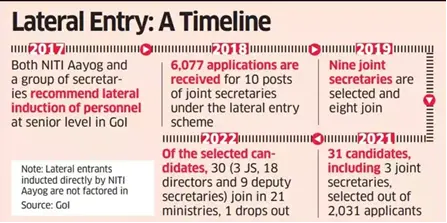
Source: ET
Green Tug Transition Program
Why in the news?
- Recently, the Union Minister of Ports, Shipping, and Waterways officially launched the Standard Operating Procedure (SOP) for the Green Tug Transition Program (GTTP).
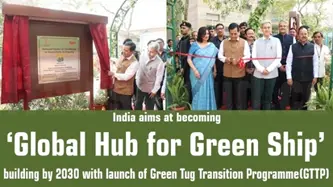
Green Tug Transition Program:
- About:
- Launch: The GTTP was initiated on May 22, 2023, as a pivotal component of the ‘Panchakarma Sankalp’.
- Objective: The program is designed to phase out conventional fuel-based harbour tugs operating in Indian Major Ports, replacing them with green tugs powered by cleaner and more sustainable alternative fuels.
- Implementation Phases:
- Phase 1:
- This phase will commence on October 1, 2024, and continue until December 31, 2027.
- During this phase, four Major Ports—Jawaharlal Nehru Port Authority, Deendayal Port Authority, Paradip Port Authority, and O.
- The program is expected to involve an investment of around INR 1000 Crores in building these green tugs.
- Chidambaranar Port Authority—will procure or charter at least two green tugs each, based on standardised designs and specifications issued by the Standing Specification Committee (SSC).
- Nodal Agency:
- The National Centre of Excellence in Green Port & Shipping (NCoEGPS) will serve as the nodal entity for this program.
- Phase 1:
- India Aim:
- These ‘Green Hybrid Tugs’ will be powered by Green Hybrid Propulsion systems, which will eventually adopt non-fossil fuel solutions such as Methanol, Ammonia, and Hydrogen.
- This vision includes ambitious targets such as sourcing 60% of each major port’s power demand from renewable energy and achieving a 30% reduction in carbon emissions per ton of cargo by 2030.
Source: PIB
Bhavishya Software
Why in the news
- Recently, the Department of Pension & Pensioners’ Welfare (DOPPW) introduced a unique innovative centralised pension processing software called ‘Bhavishya’ for all central government Ministries/Departments.
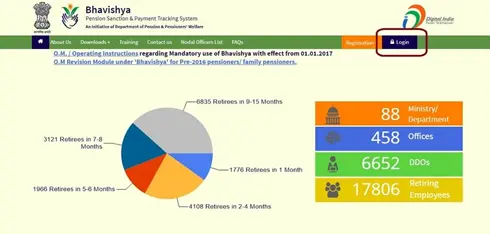
Bhavishya Software:
- About:
- Nature: Bhavishya is an online Pension Sanction & Payment Tracking System launched by the DOPPW.
- Mandate: It became mandatory for all central civil Ministries and Departments effective from January 1, 2017.
- Purpose: The software was developed to address issues such as delays and clerical errors in pension processing, financial losses, and harassment faced by pensioners.
Key feature:
- Auto Registration of Retirees:
- The ‘Bhavishya’ software was integrated with the payroll package and would auto fill in basic data of the retiring employees.
- Provide the necessary MIS to the various departments as well as to the DOPPW the number of employees due to retire in the next 15 months.
- Strict timelines:
- The software has laid down strict timelines for various stages of pension processing across all stakeholders involved.
- The process starts online 15 months prior to retirement and the pensioner has to fill up a single form once.
- The system on its own keeps throwing up alerts to the pensioner as well as to the stakeholder for meeting out the deadlines prescribed for various stages.
- Transparency and Accountability:
- There is complete transparency and accountability in processing of a pension case and due to this system, it becomes very easy to identify the delay points if any, and fix responsibility.
- Automatic Calculation of all the Retirement Benefits:
- The automatic pension calculation cutting across all Ministries/Departments is accurate since it removes manual intervention and reduces the grievances.
- Real time updates via email/SMS alerts:
- The system is capable of giving real time updates via email/SMS alerts for every action due.
- Performed relating to pension processing of central civil retirees up to the stage of first credit of pension in their respective bank’s accounts.
- e-PPO:
- The ‘Bhavishya’ has also been integrated with the PFMS module of CGA and due to this it has now become possible to issue electronic PPOs (e-PPO).
- The e-PPO is transmitted by the concerned Ministry/Department’s PAO to CPAO from where it goes to the Bank. The paying branch can view e-PPO online.
- End to End digitization:
- e-PPO makes the entire pension application, procession and payments process paperless by transferring and accepting data in encrypted form.
- Digi locker:
- Bhavishya automatically pushes the ePPO in the Digi locker account of the retiree to access it anywhere/anytime without logging into Bhavishya.
- Issue of Pensioners Identity card through Bhavishya
- Integration with Banks:
- Bhavishya has been integrated with pension portals of various banks, to provide post-retirement services like Form-16, Pension Slip, status of Life Certificate, due-drawn statement of arrears etc.
Source: PIB
Owlflies
Why in the news?
- A rare species of owlfly, Glyptobasis dentifera, has been rediscovered in Kerala by researchers after 75 years.

About Owlflies:
- Taxonomy: Owlflies belong to the Order Neuroptera, which includes holometabolous insects, whereas dragonflies belong to the Order Odonata, which includes hemimetabolous insects.
- Misidentification: Non-taxonomists often mistake owlflies for dragonflies due to their similar morphology.
- Habitat: Adult owlflies perch on blades of grass in lateritic soils and in village households surrounded by dense vegetation during the day.
- Appearance: Owlflies are distinguished by their long, clubbed antennae, which are nearly as long as their body, and their bulging eyes. Some species develop wing coloration after emergence.
- Behaviour: Adult owlflies are aerial predators that feed on other insects. When disturbed, they may release a strong, musk-like chemical to deter enemies.
- Reproduction: Owlflies typically lay eggs in groups at the tips of limbs and twigs, with the female creating a protective shield below the eggs to prevent predation.
- Larval Stage: Owlfly larvae are initially found in soil or in trees where they cluster for defensive purposes.
Source: TH
Eri Silk
Why in the news?
- Recently, the Northeastern Handicrafts and Handlooms Development Corporation (NEHHDC), under the Ministry of Development of Northeastern Region (DoNER), Govt. of India, has secured the prestigious Oeko-Tex certification for its Eri Silk.
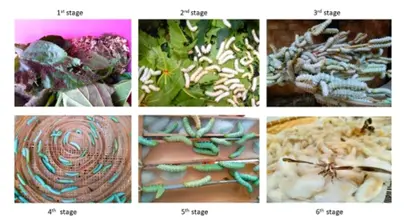
About Eri Silk:
- Vegan Silk:
- Eri silk is globally recognized as the only vegan silk, where the moth inside the cocoon is not killed.
- The moth naturally exits, leaving the cocoon for use, making Eri silk a symbol of compassion and sustainability in the textile industry.
- Production: It is produced by the domesticated silkworm Philosamia ricini, which primarily feeds on castor leaves.
- Geographical Distribution: Eri silk cultivation is primarily practised in the northeastern states of India, especially Assam, and also in Bihar, West Bengal, and Orissa.
- Geographical Indication: Eri Silk is a Geographical Indication (GI) tagged product from Assam, signifying its authenticity and regional significance.
Key Facts about Oeko-Tex Certification:
- Rigorous Standards:
- The Oeko-Tex certification involves stringent testing to ensure textiles are free from harmful substances and are produced in environmentally friendly conditions, making it a significant endorsement for Eri Silk.
- Significance:
- This certification reinforces Eri Silk’s status as a GI product from Assam, highlighting its authenticity and regional importance.
- It marks a critical step in expanding Eri Silk's presence in the global export market, establishing a strong international footprint.
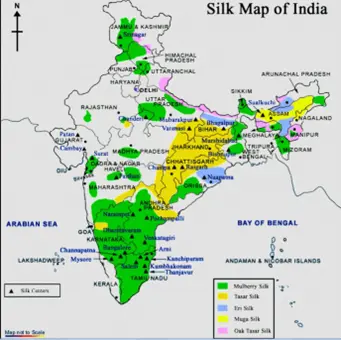
Source: PIB
The Essence of India’s Inflation Problem
Context:
- The recommendation to exclude food prices from the Reserve Bank of India's (RBI) inflation targeting framework has sparked debate among economists and policymakers.
- To understand the potential ramifications of this policy shift, it is crucial to examine the recent trajectory of inflation in India.
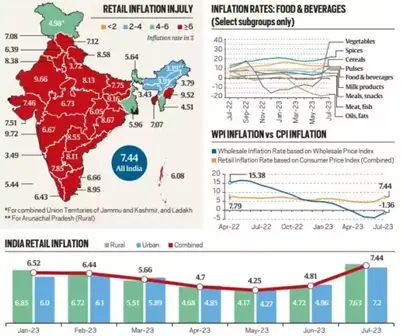
Food Price Inflation: A Persistent Challenge
- Nature of the Issue:
- Food price inflation has been a persistent challenge in India, with significant impacts on the economy and citizens' daily lives.
- Unlike temporary spikes due to external shocks or short-term supply disruptions, food price inflation in India has remained consistently elevated over an extended period.
- This trend is not merely a recent phenomenon linked to global events such as the COVID-19 pandemic or the Ukraine war; it predates these crises, indicating that domestic factors are primarily responsible.
- In June of this year, food prices in India surged by nearly 10% compared to the same month in the previous year.
- Economic Impact:
- Rising food prices exert upward pressure on wages, particularly in sectors with a large manual or low-skilled workforce, as workers demand higher wages to cope with the increased cost of living.
- This wage increase leads to higher production costs for businesses, which may then raise the prices of goods and services, fueling further inflation across the economy.
- The cycle of rising costs and prices creates a feedback loop that is difficult to break, exacerbating inflationary pressures.
- Macroeconomic Consequences:
- Persistent food price inflation reduces consumer spending on non-food items, leading to a slowdown in demand for goods and services across various sectors, thereby dampening economic growth.
- Additionally, this inflation can erode consumer confidence, leading to more cautious spending and investment behaviour, further impacting the economy.
- Policy Implications:
- The persistent and high level of food price inflation underscores the need for a nuanced approach to inflation control, one that goes beyond monetary policy and addresses structural issues in agriculture and food distribution.
- Potential measures include investing in agricultural research and development, enhancing storage and transportation infrastructure, and implementing policies that stabilise food prices through effective market interventions.
The Proposal to Exclude Food Prices from Inflation Targeting
- Justification and Concerns:
- The Economic Survey's proposal to exclude food prices from the inflation target raises significant concerns.
- Given that food accounts for nearly 50% of household expenditure in India, excluding it from the inflation target overlooks a crucial component of the cost of living for a large segment of the population.
- In contrast, food constitutes less than 10% of household expenditure in developed economies like the United States, reflecting a higher standard of living.
- Proponents' Argument:
- Supporters of the proposal argue that food price fluctuations are transitory and should not be factored into long-term inflation targets.
- However, data since 2011-12 indicates that food price inflation in India has consistently followed an upward trend, challenging the notion of transitory spikes.
- Excluding food prices from the inflation target would ignore a fundamental economic challenge that directly impacts the welfare of millions of Indians.
Limitations of Targeting Core Inflation
- Historical Context:
- Historical data suggests that excluding food prices from the inflation target may not enhance the RBI's effectiveness in controlling core inflation.
- Over the past 13 years, core inflation has consistently exceeded the RBI's target, indicating that monetary policy alone may be insufficient in managing inflation in an economy like India's.
- Challenges in Monetary Policy:
- Changes in interest rates, the primary tool of monetary policy, do not have a straightforward or predictable impact on core inflation.
- In some instances, raising interest rates to curb inflation can lead to higher prices as businesses attempt to protect profit margins amid rising costs and falling demand.
- Interconnectedness of Food and Core Inflation:
- Food price inflation influences core inflation by affecting wages and, consequently, the cost of production across various sectors.
- Ignoring food inflation could undermine the effectiveness of inflation targeting, suggesting the need for a comprehensive approach to inflation control that acknowledges the interconnectedness of food prices with the broader inflationary process.
Broader Implications of Excluding Food Prices from Inflation Targeting
- Impact on Economic Policy:
- Excluding food prices would fundamentally shift the RBI's focus from managing "headline" inflation, which includes the entire consumer price index (CPI), to targeting core inflation, excluding food and fuel prices.
- This shift would prioritise controlling the inflation of non-food and non-energy goods and services, altering the central bank's approach to monetary policy.
- Social and Welfare Concerns:
- The exclusion of food prices from the inflation target raises significant concerns about social welfare and equity.
- Food inflation disproportionately affects lower-income households, which spend a larger share of their income on food.
- For these households, even modest increases in food prices can lead to severe economic hardship, reducing their ability to afford other essential goods and services such as healthcare, education, and housing.
- Long-Term Economic Risks:
- If food inflation is not adequately controlled, inflation expectations may become unanchored, leading to persistently high inflation across the economy.
- This could erode the credibility of the RBI's inflation-targeting framework and undermine confidence in the central bank's ability to manage inflation effectively.
Different Ways to Contain Inflation:
- Monetary Policy:
- The Reserve Bank of India (RBI) adjusts key interest rates, such as the repo rate, and conducts Open Market Operations (OMO) to influence money supply and control inflation.
- Fiscal Policy Measures:
- The government uses taxation and public spending to manage inflation, with higher taxes reducing disposable income and curbing demand.
- Food Price Management:
- The government implements schemes like the Minimum Support Price (MSP) and Public Distribution System (PDS) to stabilise food prices and manage inflation.
- Buffer Stock Operations:
- The government maintains buffer stocks of essential commodities, releasing them during shortages to stabilise prices and reduce inflation.
- Trade Policies:
- Import and export regulations are adjusted to influence the supply of goods and control domestic price levels, ensuring market stability.
- Anti-Hoarding Measures:
- Regular checks and actions against hoarding and black-market activities help maintain fair markets and control inflation.
- Exchange Rate Management:
- The government monitors and manages exchange rates to ensure price stability, controlling the cost of imports and contributing to inflation management.
- Financial Inclusion Initiatives:
- Schemes like Pradhan Mantri Jan Dhan Yojana (PMJDY) enhance financial inclusion, channelizing savings into the formal banking system to reduce inflationary pressures.
Conclusion:
The proposal to exclude food prices from the inflation target carries complex and multifaceted implications. To manage inflation effectively in India, policymakers must adopt a comprehensive approach that addresses the unique challenges of the Indian economy, including the persistent issue of food price inflation.
|
UPSC Civil Services Examination, Previous Year Question (PYQ) Prelims Q 1. The lowering of Bank Rate by the Reserve Bank of India leads to (2011)
Ans: A
Q.2 Consider the following statements: (2020)
Which of the statements given above is/are correct?
Ans: (a)
Q:3. If the RBI decides to adopt an expansionist monetary policy, which of the following would it not do? (2020)
Select the correct answer using the code given below:
Ans: B |
Source: TH
Share the article
Edukemy’s Current Affairs Quiz is published with multiple choice questions for UPSC exams
MCQ
Get Latest Updates on Offers, Event dates, and free Mentorship sessions.

Get in touch with our Expert Academic Counsellors 👋
FAQs
UPSC Daily Current Affairs focuses on learning current events on a daily basis. An aspirant needs to study regular and updated information about current events, news, and relevant topics that are important for UPSC aspirants. It covers national and international affairs, government policies, socio-economic issues, science and technology advancements, and more.
UPSC Daily Current Affairs provides aspirants with a concise and comprehensive overview of the latest happenings and developments across various fields. It helps aspirants stay updated with current affairs and provides them with valuable insights and analysis, which are essential for answering questions in the UPSC examinations. It enhances their knowledge, analytical skills, and ability to connect current affairs with the UPSC syllabus.
UPSC Daily Current Affairs covers a wide range of topics, including politics, economics, science and technology, environment, social issues, governance, international relations, and more. It offers news summaries, in-depth analyses, editorials, opinion pieces, and relevant study materials. It also provides practice questions and quizzes to help aspirants test their understanding of current affairs.
Edukemy's UPSC Daily Current Affairs can be accessed through:
- UPSC Daily Current Affairs can be accessed through Current Affairs tab at the top of the Main Page of Edukemy.
- Edukemy Mobile app: The Daily Current Affairs can also be access through Edukemy Mobile App.
- Social media: Follow Edukemy’s official social media accounts or pages that provide UPSC Daily Current Affairs updates, including Facebook, Twitter, or Telegram channels.


